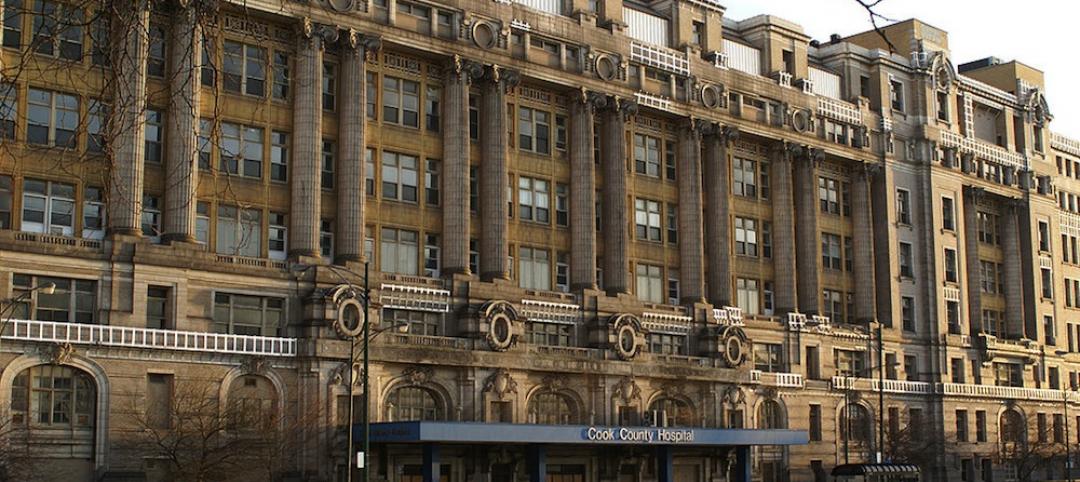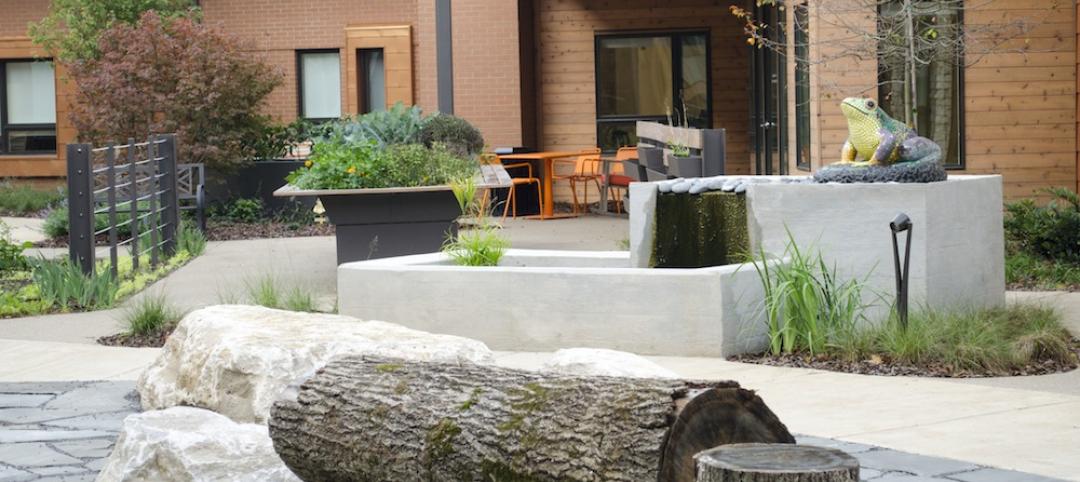Memorial Sloan Kettering Cancer Center, one of the premier cancer treatment hospitals in the world, had a problem. A recent analysis of patient volumes showed that it would run out of space for new construction at its Upper East Side campus in Manhattan in just a few years. It did own a site at East 61st Street and York Avenue, near the East River and seven blocks from its main campus at 1275 York. But the parcel was only 100 by 115 feet. On top of that, it was also within a floodplain.
MSK had never built on such a small site. “We realized that we would be developing a new paradigm,” says Suzen L. Heeley, IIDA, LEED AP, MSK’s Executive Director of Design and Construction. The design would have to take into account all support services and staff needs, since staff would be in the building for their entire shift.
The solution: go vertical. The result, devised by MSK and its architect, Perkins Eastman, is the 179,000-sf, 16-story Josie Robertson Surgery Center, which opened in December 2015.
Perkins Eastman addressed the floodplain problem by moving the mechanical systems to higher floors, “hardening” the building against flooding, says Jeffrey Brand, AIA, EDAC, Principal. Several variances were also required, including one for the surgical program, which called for uninterrupted floor plates. Operating rooms were stacked vertically on three floors, with care areas designed for specialty procedures.
Accommodating three elevators (one each for the public, patients, and service staff) reduced the floor plate to about 8,000 sf, forcing the hospital and its Building Team to come up with what Heeley calls “a new architectural and operational model.”
A key goal of the center is to limit patient stays to a few days, so encouraging patient mobility is important. (Only a small percentage of the surgery center’s patients get admitted to MSK’s main hospital.) The recovery area includes a figure-eight corridor to encourage patients to move around. They have to leave their beds to get breakfast.
The patient experience has been enhanced from admission to release, says Heeley. The waiting area features The Beehive, a reception kiosk for checking in. Patients are assigned a designated caregiver and given a location badge, which tracks their movements throughout the stay in real time. In the first six months of operation, the badges (from HealthLoop) recorded 248,000 patient touch points.
The waiting area also has “campsites,” where patients and families can gather without having to move a lot of furniture. Brand says these areas are like living rooms, with a food bar, a business center, a library, and places where children can play Wii.
Staff comforts were not ignored. The design infuses plenty of daylight throughout the core of the building. The staff-only top floor, known as The Mixing Bowl, provides food service, conference and business areas, and spaces where clinical staff can mingle informally. Other rooms include The Soap Box (for dining and meeting) and places for computer workstations.
The building has become so popular with staff members that there’s currently a waiting list of employees who want to work there.
Josie Robertson borrows many of its design and construction ideas from the hospitality sector. Perkins Eastman collaborated with the New York–based interior design firm iCrave—known primarily for its restaurant and airport work—to make the interior spaces emulate a home-recovery experience.
The walkways in the post-anesthesia care floors are filled with artwork. There’s room for patients to exercise and socialize. Wood finishes, with their soothing, organic texture, are prevalent throughout.
“We wanted something different,” says Heeley. She admits that MSK’s leadership was nervous about bringing in iCrave, but felt confident that Perkins Eastman, which has been designing for MSK for decades, had the healthcare chops to keep the project on track. Controlling the budget did take some “curating,” she says, when it came to choosing lighting, furniture, and flooring.
Heeley says that elements of the Josie Robertson concept will inevitably find their way into future MSK projects, including the 750,000-sf Robert Koch Center for ambulatory care. “We’re designing in a flexible way to be able to make changes quickly,” she says.
Related Stories
Healthcare Facilities | Apr 29, 2016
How improving emergency department design leads to greater hospital efficiency
Efficient ED operations result in shorter wait times, quicker diagnosis and care plans, maximum utilization of high-cost human and physical resources, and overall better patient experiences and patient satisfaction scores, writes CBRE Healthcare's Curtis Skolnick.
Healthcare Facilities | Apr 24, 2016
A symposium in New Jersey examines how a consolidating healthcare industry can better manage its excess real estate
As service providers position themselves closer to their communities, they are looking for ways to redirect non-core buildings and land for other purposes.
Senior Living Design | Apr 14, 2016
Creating a home for eldercare using the ‘Green House’ design concept
VOA Associates’ Douglas King offers design considerations in implementing the Green House concept in eldercare for continuing care retirement communities.
Adaptive Reuse | Apr 7, 2016
Redevelopment plan announced for Chicago’s historic Cook County Hospital
The century-old, Beaux Arts architecture-inspired hospital will transform into a mixed-use development.
Industry Research | Apr 7, 2016
CBRE provides latest insight into healthcare real estate investors’ strategies
Survey respondents are targeting smaller acquisitions, at a time when market cap rates are narrowing for different product types.
Healthcare Facilities | Mar 11, 2016
Report: Hospitals’ fossil fuel use trending downward, but electricity consumption hardly declining
A new survey from engineering firm Grumman/Butkus Associates examines electricity, fossil fuel, water/sewer, and carbon footprint of healthcare facilities.
Office Buildings | Mar 9, 2016
CBRE: Workplace wellness on the rise
As insurance premiums and deductibles continue to rise, both employees and employers are evaluating options to improve their wellbeing, writes CBRE Healthcare Managing Director Craig Beam.
Healthcare Facilities | Mar 7, 2016
Can 'active' building designs make people healthier?
The new high-performance Kaiser Permanente facility in Anne Arundel County, Md., uses the built environment to improve the overall health of its occupants, writes GS&P's Terrance Perdue.
Healthcare Facilities | Mar 4, 2016
Building a home where Alzheimer’s patients can thrive
Skanska recently completed Abe’s Garden in Nashville, Tenn., a memory care community designed to improve the lives of those affected by Alzheimer’s disease. Skanska's Senior Project Manager Jeff Elpers has more on the facility.
Healthcare Facilities | Mar 1, 2016
Christ Hospital in Cincinnati brings its joint and spine care services under one roof
The opening coincides with agreements that make this center a preferred provider for several employers with self-funded healthcare plans.
















